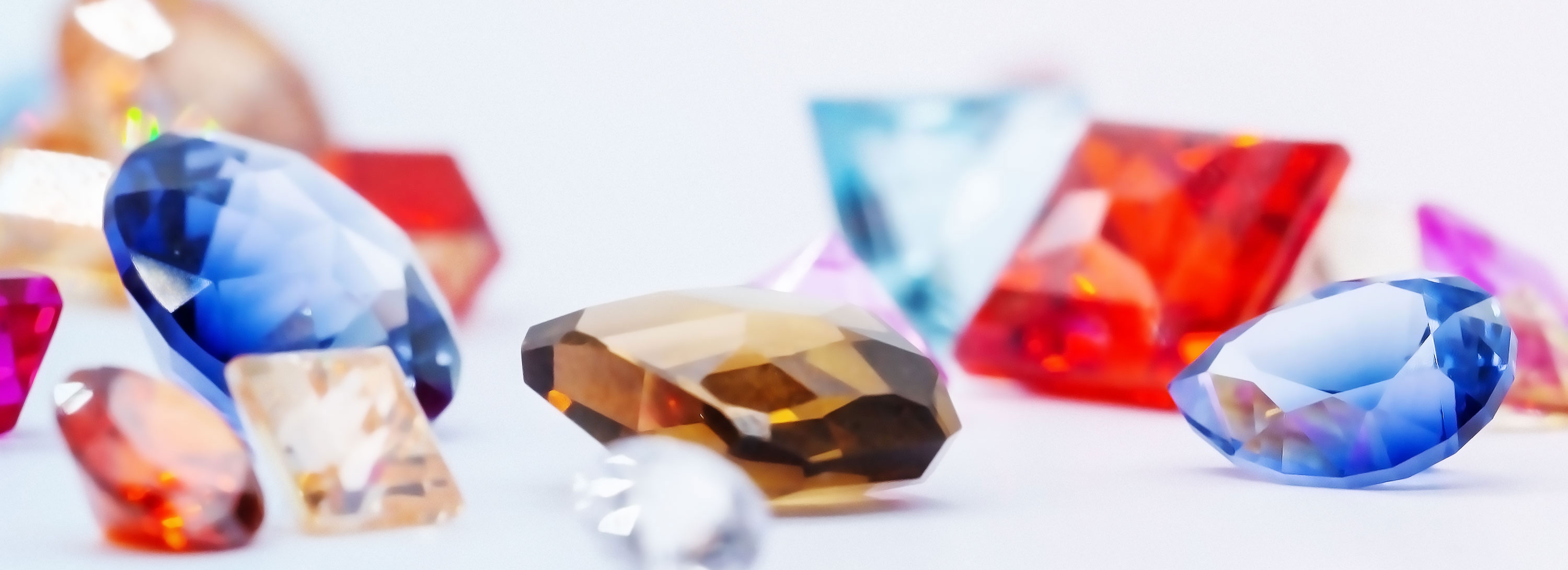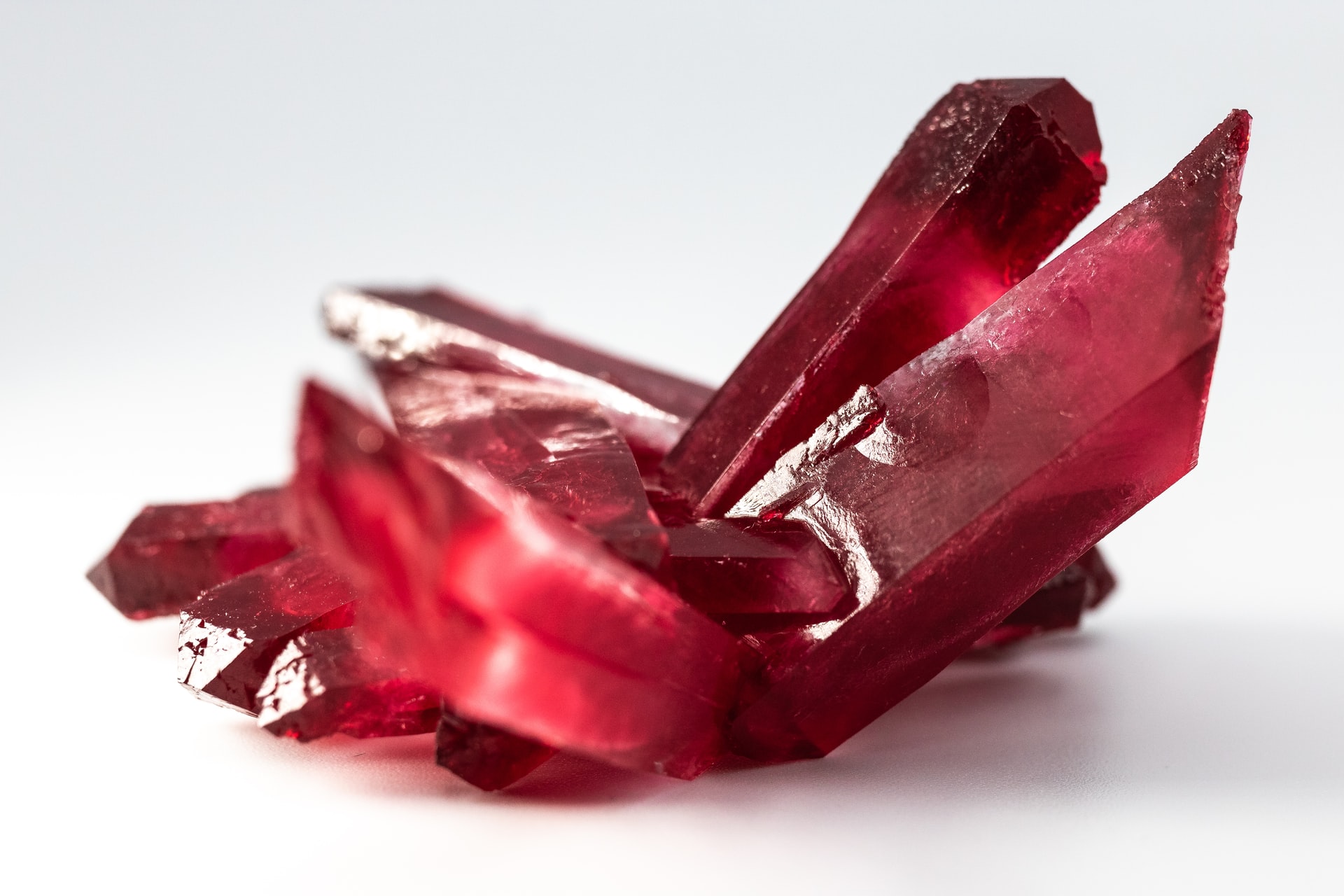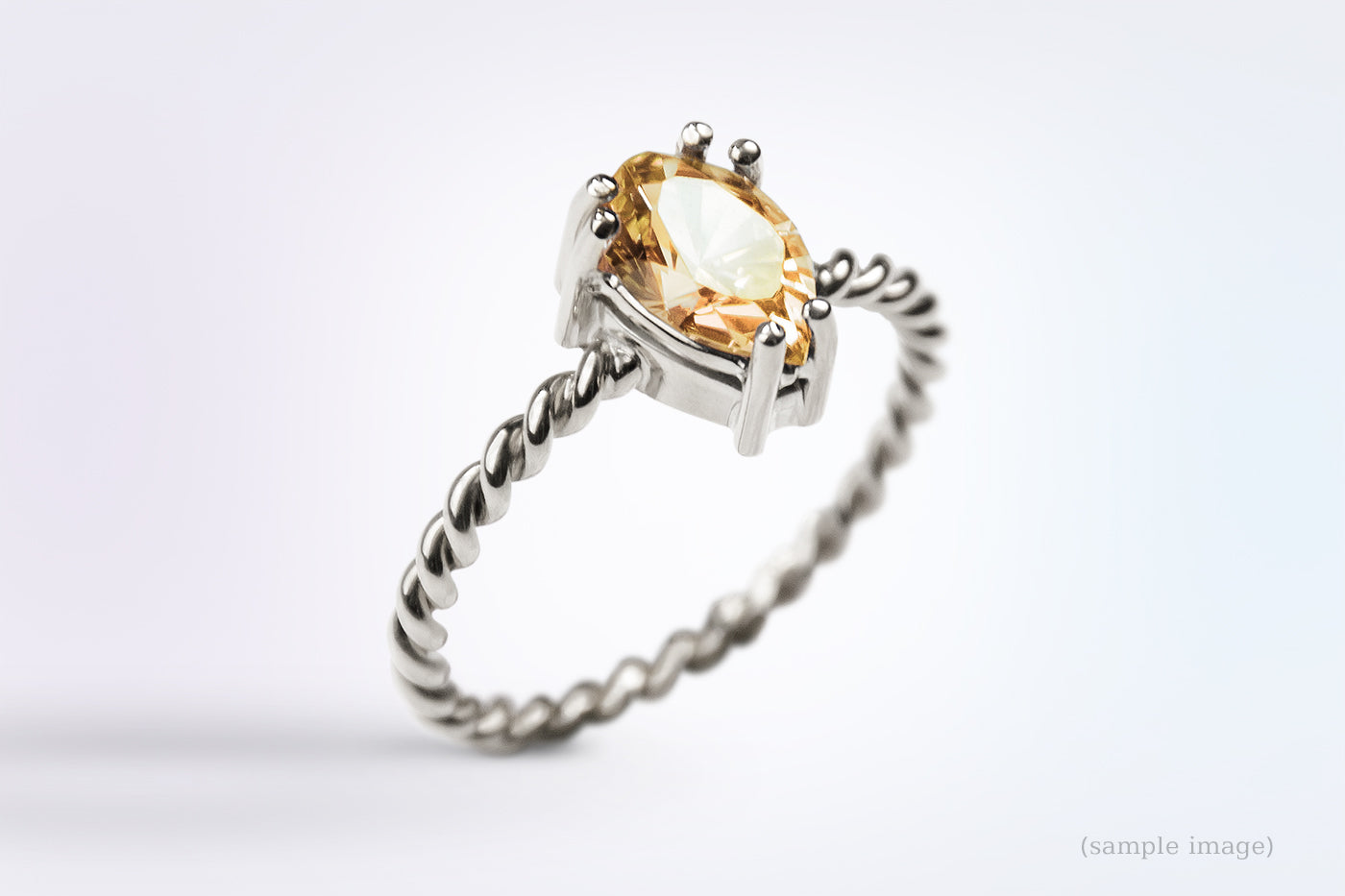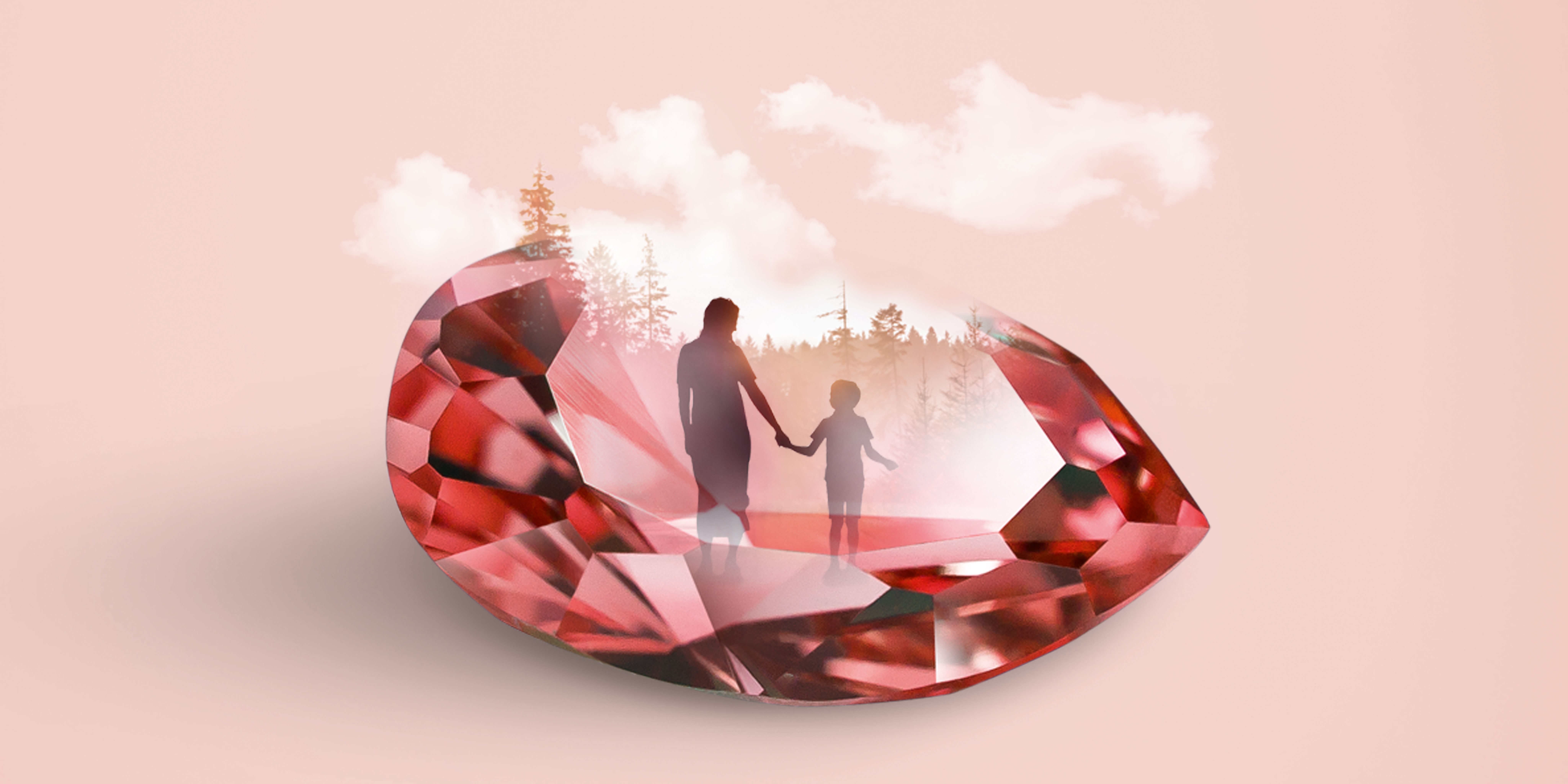
Materials science 1: Sapphire and ruby
Eigenschaften, Herstellung, Unterschied
Ob mystisch-blau oder leuchtend-rot – Edelsteine faszinieren die Menschen seit jeher. Und bei Mevisto spielen sie im wahrsten Sinne des Wortes eine tragende Rolle: Wir fertigen einzigartige Schmuckstücke, die weit mehr als eine Erinnerung an einen geliebten Menschen sind, und von Angehörigen, Freunden und Familienmitgliedern getragen werden. Hierfür verwenden wir Rubine und Saphire.
Aber was ist eigentlich der Unterschied zwischen den beiden Edelsteinen, wie werden sie hergestellt und was macht sie so besonders? Wir gehen diesen Fragen auf den Grund.
Rubin und Saphir: Wo liegt der Unterschied?
Die einfache Antwort lautet: in der Farbe. Die kompliziertere: rein auf das Material bezogen gibt es keinen Unterschied. Also wie jetzt? Beginnen wir am Besten ganz von vorne: Sowohl Rubine als auch Saphire gehören zur Familie der Korunde. Dieses Mineral zählt zu den Oxiden und Hydroxiden – streng genommen handelt es sich dabei um Aluminiumoxid. In chemisch reiner Form sind Korunde farblos, es gibt jedoch einige farbige Varietäten mit der gleichen stofflichen Zusammensetzung und Kristallstruktur. Dazu zählen die besagten Rubine und Saphire.
Es ist also letztendlich die Farbe, die die ansonsten völlig gleichen Edelsteine unterscheidet. Und hierbei spielen zum Beispiel Chrom, Eisen oder Titan als weitere Bestandteile eine Rolle. Während Rubine kräftig rot leuchten, versammelt die Bezeichnung „Saphir“ alle Farbvarianten von Tiefblau über Violett und Grün bis hin zu Gelb, Rosa und Blau. Der Name „Rubin“ geht dabei auf das lateinische Wort „rubinus“ für Rot zurück, die Bezeichnung „Saphir“ könnte laut Sprachforschern vom Armäischen „Saphira“ für „die Schöne“ abstammen. Rosa-orangefarbene Korunde werden darüber hinaus als Padparadscha bezeichnet. „Padma raga“ ist wiederum die singhalesische Farbbezeichnung für eine Lotusblume.
Rubine und Saphire: Eigenschaften und Vorkommen
Die Unterschiede hätten wir also geklärt, wie sieht es nun mit den Eigenschaften von Saphiren, Rubinen und Co. aus? Korunde ganz allgemein nehmen in puncto Härte den Platz 9 auf der bis 10 reichenden Mohsschen Härteskala ein und reihen sich somit gleich hinter Diamanten ein. Außerdem punkten Saphire, Rubine und weitere Varianten mit Eigenschaften wie Temperaturbeständigkeit und Abriebfestigkeit, wodurch sie als wichtiges Industriematerial gelten.
Diese Mineralien bilden oft lange, prismatische oder säulen- bis tonnenförmige Kristalle aus, können aber auch körnige Aggregate aufweisen. Die größten bisher bekannten Korunde wogen 152 Kilogramm und waren über einen Meter lang. Natürlich kommen Korunde generell häufig und quer über den Globus verteilt vor – vor allem in aluminiumreichen und siliciumuntersättigten Gebieten.
Seit Ende des 19. Jahrhunderts können sie auch synthetisch hergestellt werden. Hierbei leistete der französische Chemiker Auguste Verneuil 1888 Pionierarbeit, indem er mittels des „Schmelz-Tropf-Verfahrens“ erstmals künstliche Rubine produzierte. Heute können Saphire und Rubine darüber hinaus mithilfe des Ziehverfahrens und des Flussmittelverfahrens hergestellt werden. Ausgangspunkt bei allen Varianten ist geschmolzenes Aluminiumoxid. Dieses kristallisiert im zweiten Schritt an sogenannten „Keimkristallen“ aus. Beim Hydrothermalverfahren kommt zusätzlich Überdruck zum Einsatz.

Unsere Mevisto-Edelsteine
Wir von Mevisto stellen ebenso Saphire und Rubine her – und zwar ganz besondere: Sie tragen Elemente des Verstorbenen in sich. Unser Tun stützt sich dabei auf mehrjährige Forschungsarbeit und ein eigens entwickeltes Verfahren. Herzstück eines jeden personalisierten Edelsteins sind 50 g Asche oder 10 g Haar eines geliebten Menschen oder Tieres. Dieses biogene Material wird zu Beginn des Prozesses speziell aufbereitet. Das heißt: Bestimmte Elemente werden extrahiert. Diese Essenz ist von Mensch zu Mensch und von Tier zu Tier unterschiedlich, ja mehr noch: Sie ist einzigartig!
Und das ist auch das Besondere unserer Rubine und Saphire: Sie tragen den Charakter eines jeden Lebewesens in sich. Das Wesen. Das Innere. Wie man es auch nennen möchte. Daraus lassen wir im nächsten Schritt in Öfen bei über 2000°C einen Kristall wachsen. Die zuvor extrahierten Elemente werden dabei in der Gitterstruktur des Edelsteins gebunden.
Zu guter Letzt wird der Edelstein geschliffen und in Form gebracht. Und findet entweder in unseren selbst entwickelten Schmuckstücken mit 18-karätigem Gold Platz oder in einem individuellen Schmuckstück nach Wunsch. Dabei stehen verschiedene Farben zur Auswahl. Von farblos, Champagner, Pfirsich, Orange und Braun bis hin zu Rosa, Rot, Violett und Blau reicht die Palette. Übrigens: Wie hell oder dunkel ein Rubin oder Saphir letztendlich wird, können wir nicht vorhersagen.
In diesem Zusammenhang sagen wir gerne: „Das sucht sich der Verstorbene aus.“ Denn auch das hängt mit dem Inneren des Herzensmenschen oder -tieres zusammen und ist auch für uns jedes Mal aufs Neue eine spannende Angelegenheit.

Die Energie verstorbener Herzensmenschen spüren
Jeder unserer Edelsteine trägt also den Charakter oder das energetische Wirken eines Verstorbenen in sich. Oder wie es eine Kundin in unserem Gästebuch so treffend formulierte: „Meine Oma war für mich ein ganz besonderer Mensch!
Bereits zu ihrer irdischen Zeit, die ich noch ein paar Jahrzehnte begleiten durfte, habe ich viele Eigenschaften bewundert und versucht, in mein Leben zu integrieren. Als sie die Erde verlassen hat, hatte ich das Bedürfnis, mehr als nur eine ‚normale‘ Erinnerung an sie zu haben. Jetzt darf ich diesen Ring mit dem besonderen Stein tragen und die Energie, die sie bis an ihr Ende versprüht hat, spüren. Ein tolles Gefühl!“
Sonderausstellung am Wiener Zentralfriedhof
Mehr über die Rubin- und Saphir-Herstellung und unser Wirken können Sie derzeit auch im Bestattungsmuseum am Wiener Zentralfriedhof erfahren. Eine Sonderausstellung in einem speziellen Raum widmet sich ganz diesem Thema.

